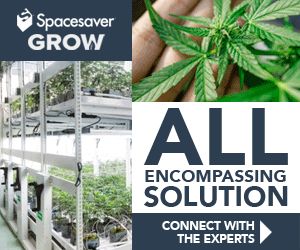Don’t Take Shortcuts with Pot Growing Systems
The cannabis industry depends on commercial cultivation to cater to both medical and recreational users. For businesses wanting a competitive edge, a blend of efficiency and high yields is non-negotiable. Hydroponic indoor systems set up in vertical growing configurations dominate the commercial cannabis cultivation scene. Their main advantage is the promise of a controlled setting, leading to reliable quality over multiple harvests.
Such setups are excellent for utilizing space, making it possible to have several cultivation cycles in a year, and leading to increased earnings. However, shifting from traditional or small-scale farming to commercial cultivation brings both hurdles and opportunities. Shortcuts and quick-fixes, while they might seem appealing at first, can hit hard in terms of yield and dollars lost down the line.
If you are new to commercial potcultivation, don’t take shortcuts for your pot growing system. Instead, rely on methodical application of these best practices to help you maximize your yield — and your profits.
Navigating the Challenges of Commercial Cultivation
Scaling Up: One of the most common pitfalls is the misconception that scaling up is merely about bigger equipment. In reality, it’s more like upgrading from a family car to managing a fleet of trucks. The logistics, workflows and staffing all need to be meticulously reimagined and recalibrated. When you think about scaling up, take the time to plan for all the changes in your operation, from supply chain to workforce to space utilization.
Consistency: In the world of commercial cultivation, consistency is essential. Any variations in technique can lead to fluctuations in yield, which commercial operations can’t afford. The solution? A well-defined, unwavering, standardized approach. By ensuring every step of the cultivation process is meticulously planned and executed, growers safeguard their yield and keep the trust of their consumer base.
Staying up to Date: The cannabis landscape is ever-evolving. For teams aiming to stay ahead, the learning curve should always be upwards. Regular training, workshops, and immersion in the latest trends are a must. Skimping on continuous education might seem like an easy way to save time and money, but in the long run, it’s a shortcut that can leave even the most seasoned teams trailing in the wake of a fast-paced industry.
Crafting a Masterful Commercial Cultivation Strategy
Architecting the Perfect Environment: This is the foundation. Whether you lean towards expansive greenhouses or technologically advanced indoor farms, the blueprint should be laser-focused on optimizing every inch, ensuring efficient lighting, robust ventilation and strategic space management. Vertical growing systems are the latest in space efficiency innovation, and while they may require more time and energy upfront to set up, they can more than double the production of an indoor space while offering flexibility for the latest in pot growing technologies.
Lighting: In commercial cultivation, lighting is a science. Cannabis plants need specific kinds of lighting at precise intervals that vary depending on where the plant is in its growth cycle. Investing time and money to research and purchase premium lighting solutions that work with your space and storage systems is pivotal.
The Right Medium: On the commercial stage, the choice of growth medium becomes a critical player. Combined with automated nutrient delivery systems, it ensures that plants get a consistent, optimized feed, paving the way for optimal health and yield.
Strain Strategy: While offering a variety of strains might seem enticing, it’s crucial to prioritize strains that thrive in specific cultivation setups and have a proven market demand. Casting a wide net without research-backed strategy may seem like a catch-all solution, but precision wins over luck every time.
Proactivity in Pest and Disease Management: Proactive, practical measures for cleanliness and pest control, like regular checks and strict hygiene protocols, save entire harvests. Deciding on cleaning standards and practices may not be the most exciting part of designing your operation, and might even seem unnecessary (isn’t keeping a space clean “common sense?”), a clear plan provides accountability and helps keep to a schedule when your system gets busy.
Operational Wisdom for the Modern Commercial Cultivator
Embracing the Tech Revolution: Modern technology can help cultivators grow their plants and grow their business. With tools that allow for precise monitoring and regulation of key parameters inside the grow room, growers can ensure optimal conditions around the clock. These systems require investments to set up, and often come with some learning curve, but they can save crops and maximize yields.
High Quality: Every product must undergo rigorous testing to make sure that it accurately represents the brand. Consistency in quality isn’t just a mark of excellence but also essential for adherence to regulations. It might be tempting to fast-track products to the market, but when it comes to ensuring quality, taking shortcuts is both a brand and regulatory gamble that no producer should be willing to take.
Going Green: As the world pivots towards sustainability, ethical cultivation methods resonate more than ever with consumers. They’re not just ecologically responsible but also have the potential to offer cost benefits in the long run. Green setups require research, but even initial startup costs may be offset by ongoing sustainability initiatives.
Transitioning or refining commercial cannabis cultivation takes a lot of strategic planning. Prioritizing quality, adaptability and eco-friendly measures empowers pot growers to guarantee lucrative returns and product that holds its own in a fiercely competitive landscape.
Tags:
Related Posts
- When to Use Modular Casework Systems ( July 17, 2024 )
- Multiply Your Usable Space With Sliding Lateral Shelving Systems ( July 17, 2024 )
- How Office Shelving and Storage Go Hand in Hand ( June 17, 2024 )
- How to Create Extra Storage Space for a Corporate Office ( June 17, 2024 )
- STORAGE ROOM IN A HOSPITAL: KEY CONSIDERATIONS ( May 13, 2024 )
- PUBLIC SAFETY STORAGE: 5 TIPS TO MAXIMIZE SPACE ( May 13, 2024 )
- HOW INDUSTRIAL MOBILE SHELVING MAXIMIZES SPACE ( April 17, 2024 )
- COMPACT LIBRARY SHELVING – HOW TO MAKE THE MOST OF SPACE ( April 17, 2024 )
- HOTEL HOUSEKEEPING STORAGE ROOM TIPS ( March 14, 2024 )
- HOW PERSONAL STORAGE LOCKERS UNLOCK CONVENIENCE ( March 14, 2024 )


